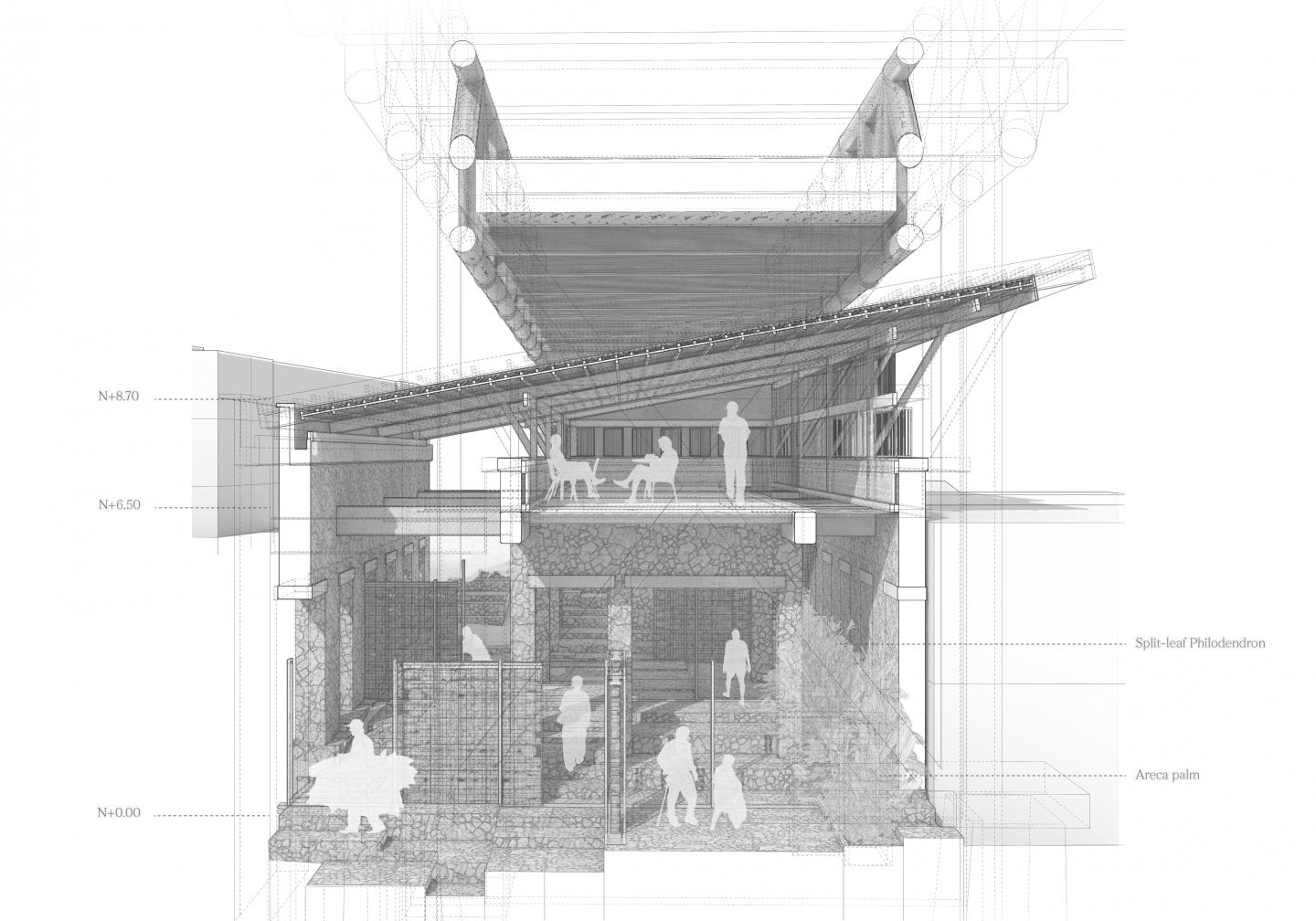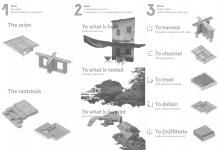La Magdalena neighborhood, located in the historic city of Honda, Tolima, is a living, anomalous and isolated organism enclosed by boundaries that transcend scales and timelines similarly to how the railway once did between the port of Caracolí and the coffee mills, and as the bridges and rivers do today. Simultaneously vulnerable to flooding and eruption, and steeped in the memory of a fishing tradition struggling to survive, this neighborhood also faces the threat of an imposed order from an ambitious urban plan that largely overlooks the value of this contained place.
With this in mind, this project is born from the discovery and recognition of its urban layout, its social fabric, and its connection to the territory, to propose specific interventions that engage, at the same time, with the people who inhabit this place, as well as with the scales of its geology and history. It is, above all, an intervention on the soil where spaces for gathering are built. It begins, therefore, with a network built up in two stages associated with its location within the neighborhood’s urban layout:
1. To deconstruct the edge: Border spaces which aim to renew the neighborhood’s connections with the city and the rivers.
2. To dissolve the soil: Consisting of structures for disorder (Sendra & Sennett, 2021) located in the widening of the urban layout, intended to compel the emergence of transversal connections to the belt, formed by the border spaces, through the creation of spaces for gathering.
The network is formed by intervention pieces which are called grafts: units of disorder (Sendra & Sennett, 2021) characterized by a morphology resulting from the accumulation of memories collected in the taxonomy and drift within the neighborhood. Thus, they are welded to La Magdalena, to its walls, its roofs, its rocks, and its bridges. Therefore, each graft responds independently to a particular social function associated with its location while collectively forming the previously described network linked to the urban layout.
Now, fully appropriating the semantics of the graft and assuming as true that, in the words of Paul Valery, “acts already imply living beings,” the grafts function as follows:
1. They consist of two main elements or parts:
a. A "rootstock": A layer of soil, as main witness of the multiple temporalities which have built up over time in the neighborhood, which defines a space for gathering.
b. A "scion": A roof layer associated with the existing constructions and vegetation; thus, it forms and/or completes shaded spaces for gathering.
2. They are welded to an existing element, whether built, vegetative, or part of the soil layers.
3. They establish relationships with water and make them visible, meaning they collect, treat, infiltrate, detain, and channel water through visible elements in the architecture.
4. They respond to the daily cycles of inhabiting public space, meaning they plant, harvest, provide shade, and create spaces for gathering.
Overall, each graft functions and acts independently, but together they share the characteristics previously described. I invite you to discover in each one the rivers, the currents, the conversations, and the rocks, while they remain on the great scale of the impermanent.
2024
.
Tutors / Instructors: Daniela Atencio Valladares, Claudio Rossi González and Daniel Bonilla
Favorited 1 times
















